-
BackX
-
Components
-
-
Category
-
Semiconductors
- Diodes
- Thyristors
-
Electro-insulated Modules
- Electro-insulated Modules | VISHAY (IR)
- Electro-insulated Modules | INFINEON (EUPEC)
- Electro-insulated Modules | Semikron
- Electro-insulated Modules | POWEREX
- Electro-insulated Modules | IXYS
- Electro-insulated Modules | POSEICO
- Electro-insulated Modules | ABB
- Electro-insulated Modules | TECHSEM
- Go to the subcategory
- Bridge Rectifiers
-
Transistors
- Transistors | GeneSiC
- SiC MOSFET Modules | Mitsubishi
- SiC MOSFET Modules | STARPOWER
- Module SiC MOSFET ABB’s
- IGBT Modules | MITSUBISHI
- Transistor Modules | MITSUBISHI
- MOSFET Modules | MITSUBISHI
- Transistor Modules | ABB
- IGBT Modules | POWEREX
- IGBT Modules | INFINEON (EUPEC)
- Silicon Carbide (SiC) semiconductor elements
- Go to the subcategory
- Gate Drivers
- Power Blocks
- Go to the subcategory
- Electrical Transducers
-
Passive components (capacitors, resistors, fuses, filters)
- Resistors
-
Fuses
- Miniature Fuses for electronic circuits - ABC & AGC Series
- Tubular Fast-acting Fuses
- Time-delay Fuse Links with GL/GG & AM characteristics
- Ultrafast Fuse Links
- Fast-acting Fuses (British & American standard)
- Fast-acting Fuses (European standard)
- Traction Fuses
- High-voltage Fuse Links
- Go to the subcategory
- Capacitors
- EMI Filters
- Supercapacitors
- Power surge protection
- TEMPEST emission revealing filters
- Surge arrester
- Go to the subcategory
-
Relays and Contactors
- Relays and Contactors - Theory
- 3-Phase AC Semiconductor Relays
- DC Semiconductor Relays
- Controllers, Control Systems and Accessories
- Soft Starters and Reversible Relays
- Electromechanical Relays
- Contactors
- Rotary Switches
-
Single-Phase AC Semiconductor Relays
- AC ONE PHASE RELAYS 1 series| D2425 | D2450
- One phase semiconductor AC relays CWA and CWD series
- One phase semiconductor AC relays CMRA and CMRD series
- One phase semiconductor AC relays - PS series
- Double and quadruple semiconductor AC relays - D24 D, TD24 Q, H12D48 D series
- One phase semiconductor relays - gn series
- Ckr series single phase solid state relays
- One phase AC semiconductor relays for DIN bus - ERDA I ERAA series
- 150A AC single phase relays
- Rail Mountable Solid State Relays With Integrated Heat Sink - ENDA, ERDA1 / ERAA1 series
- Go to the subcategory
- Single-Phase AC Semiconductor Relays for PCBs
- Interface Relays
- Go to the subcategory
- Cores and Other Inductive Components
- Heatsinks, Varistors, Thermal Protection
- Fans
- Air Conditioning, Accessories for Electrical Cabinets, Coolers
-
Batteries, Chargers, Buffer Power Supplies and Inverters
- Batteries, Chargers - Theoretical Description
- Modular Li-ion Battery Building Blocks, Custom Batteries, BMS
- Batteries
- Battery Chargers and Accessories
- Uninterruptible Power Supply and Buffer Power Supplies
- Inverters and Photovoltaic Equipments
- Energy storage
- Fuel cells
- Lithium-ion batteries
- Go to the subcategory
-
Automatics
- Spiralift Lifts
- Futaba Drone Parts
- Limit Switches, Microswitches
- Sensors, Transducers
-
Infrared Thermometers (Pyrometers)
- IR-TE Series - Water-proof Palm-sized Radiation Thermometer
- IR-TA Series - Handheld Type Radiation Thermometer
- IR-H Series - Handheld Type Radiation Thermometer
- IR-BA Series - High-speed Compact Radiation Thermometer
- IR-FA Series - Fiber Optic Radiation Thermometer
- IR-BZ Series - Compact Infrared Thermometers
- Go to the subcategory
- Counters, Time Relays, Panel Meters
- Industrial Protection Devices
- Light and Sound Signalling
- Thermographic Camera
- LED Displays
- Control Equipments
- Go to the subcategory
-
Cables, Litz wires, Conduits, Flexible connections
- Wires
- Cable feedthroughs and couplers
- Litz wires
- Cables for extreme applications
- Sleevings
-
Braids
- Flat Braids
- Round Braids
- Very Flexible Flat Braids
- Very Flexible Round Braids
- Cylindrical Cooper Braids
- Cylindrical Cooper Braids and Sleevings
- Flexible Earthing Connections
- PCV Insulated Copper Braids (temp. up to 85C)
- Flat Aluminium Braids
- Junction Set - Braids and Tubes
- Steel Braids
- Go to the subcategory
- Traction Equipment
- Cable Terminals
- Flexible Insulated Busbars
- Flexible Multilayer Busbars
- Cable Duct Systems
- Go to the subcategory
- View all categories
-
Semiconductors
-
-
- Suppliers
-
Applications
- CNC Machine Tools
- DC and AC Drives (Inverters)
- Energetics
- Energy bank
- Equipment and Components for Hazardous Areas [Ex]
- Equipment for Distribution, Control and Telecommunications Cabinets
- HVAC Automation
- Induction Heating
- Industrial Automation
- Industrial Protective Devices
- Machines for Drying and Wood Processing
- Machines for Thermoforming Plastics
- Mining, Metallurgy and Foundry
- Motors and Transformers
- Power Supplies (UPS) and Rectifier Systems
- Printing
- Temperature Measurement and Regulation
- Test and Laboratory Measurements
- Tram and Railway Traction
- Welding Machines
-
Assembly
-
-
Inductors
-
-
Induction devices
-
-
Service
-
- Contact
- Zobacz wszystkie kategorie
Peszel – An Indispensable Solution for Cable Protection

Peszel is a specialized protective conduit widely used in electrical installations. It protects wires and cables from mechanical damage, weather conditions, UV radiation, and moisture. Thanks to its design, it allows safe routing of cables in public buildings as well as in industrial, residential, or telecommunications installations. Cable conduits are extremely practical because they can be corrugated, which increases their flexibility and allows cables to be routed in hard-to-reach areas.
What is a peszel and what is it used for?
Peszel is a protective conduit made of plastic, usually resistant to external factors. Some types of peszle, such as self-extinguishing or specialized ones, are additionally resistant to high temperatures. Its main purpose is to protect electrical cables and wires against:
- mechanical damage during installation and operation,
- moisture and chemicals,
- UV radiation, which can cause material brittleness,
- fire – some peszle are self-extinguishing, and halogen-free versions additionally do not emit harmful gases when burned.
Thanks to cable conduits, cables can be safely routed through walls, floors, attics, or industrial installations while maintaining a high level of protection.
Types of cable conduits
The choice of the appropriate peszel depends on the purpose and installation conditions. The most commonly used types are:
1. Corrugated conduits – the most popular, flexible, and easy to bend in curves and hard-to-reach areas. They allow routing cables in wall and floor installations.
2. Smooth conduits – harder to bend, used in locations where higher mechanical protection is required while maintaining some flexibility.
3. Self-extinguishing conduits – used in installations requiring a high level of safety, e.g., in public buildings.
4. Halogen-free conduits – do not emit harmful gases when burned, increasing safety in case of fire.
Each of these types has specific applications depending on the type of cables, installation location, and project requirements.
Applications of conduits in electrical installations
Cable conduits are used in a wide range of applications:
- Residential installations – routing cables in walls, floors, and attics;
- Industrial installations – protecting cables from mechanical damage and chemical exposure;
- Telecommunication systems – routing telephone and data cables in conduits protects them from damage;
- Public buildings – using self-extinguishing conduits increases fire safety;
- Outdoor installations – conduits resistant to UV radiation and weather conditions protect cables in challenging environmental conditions.
Cable conduits allow convenient routing of cables in hard-to-reach areas, e.g., behind walls, under floor screeds, or in installation channels. Thanks to their design, they can be easily corrugated, enabling cables to be routed at angles and curves without the risk of damage.
Installation and use of conduits
Installing cable conduits is simple and quick. Pipes can be mounted on:
- walls, floors, or ceilings,
- attics, in installation channels,
- hard-to-reach areas requiring a high level of flexibility.
When routing cables, remember to:
- choose the appropriate conduit diameter for the number of cables,
- maintain the minimum bending radius of the conduit to avoid damaging cable insulation and ensure safe routing,
- protect conduit ends to prevent dust, moisture, or other contaminants from entering.
Corrugated conduits facilitate routing cables in curves and bends, while self-extinguishing and UV-resistant conduits provide safety in challenging conditions.
Protection of cables and wires
The main purpose of using cable conduits is to protect electrical wires against external and mechanical factors. Cables in conduits are protected from:
- impacts and mechanical damage during installation,
- moisture and dust, which can cause short circuits or corrosion of the wires,
- UV radiation, which degrades cable insulation in outdoor installations,
- chemical exposure in industrial environments and high temperatures for conduits designed for such conditions.
Using conduits significantly reduces the risk of installation failures or malfunctions and increases user safety and the durability of the entire electrical system.
Conduits in installation projects
When designing an electrical installation, conduits allow for planning cable routing safely and aesthetically. They can be used:
- under floors, before laying screeds,
- in walls and ceilings,
- in industrial installations where cables are exposed to mechanical and chemical factors.
Thanks to the different types of conduits, it is possible to choose the right peszel for the project’s needs, ensuring high reliability and durability of the installation.
Conclusion
Cable conduits are invaluable components of every electrical installation. They protect wires and cables from mechanical damage, moisture, UV radiation, and fire, ensuring the safety and reliability of the entire system. Corrugated pipes, self-extinguishing and UV-resistant, enable cable routing in hard-to-reach areas and in any conditions. Using conduits is key to a durable and safe electrical installation in residential, industrial, and public buildings alike.
We invite you to explore our offer and discover how a properly selected peszel can increase the safety and durability of your installation. Check our solutions and choose conduits suited to your needs.
Related products
Related posts
 Thermally conductive materials in power storages
Thermally conductive materials in power storages
 Measuring power and energy in electric circuits
Measuring power and energy in electric circuits
 Wentylatory przemysłowe - rodzaje, właściwości
Wentylatory przemysłowe - rodzaje, właściwości

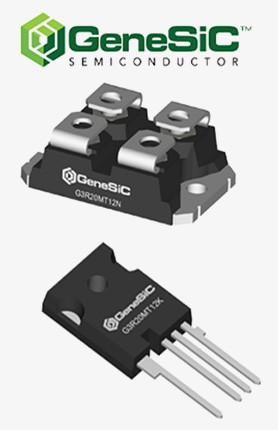
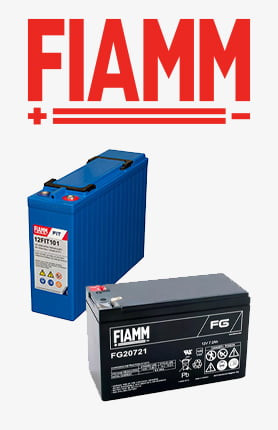
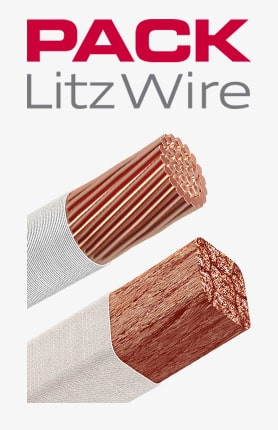
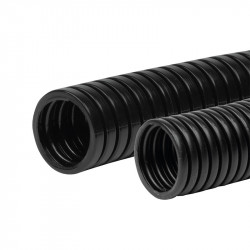
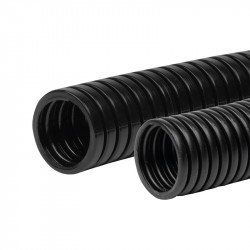
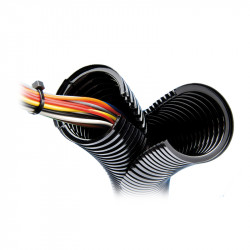
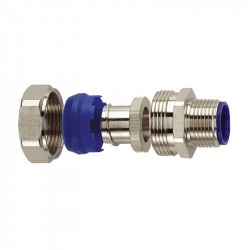
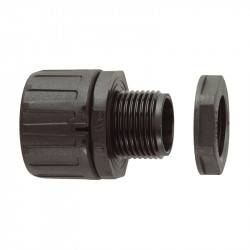
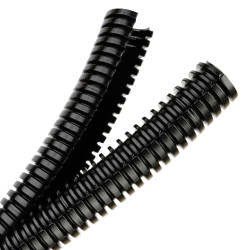

Leave a comment